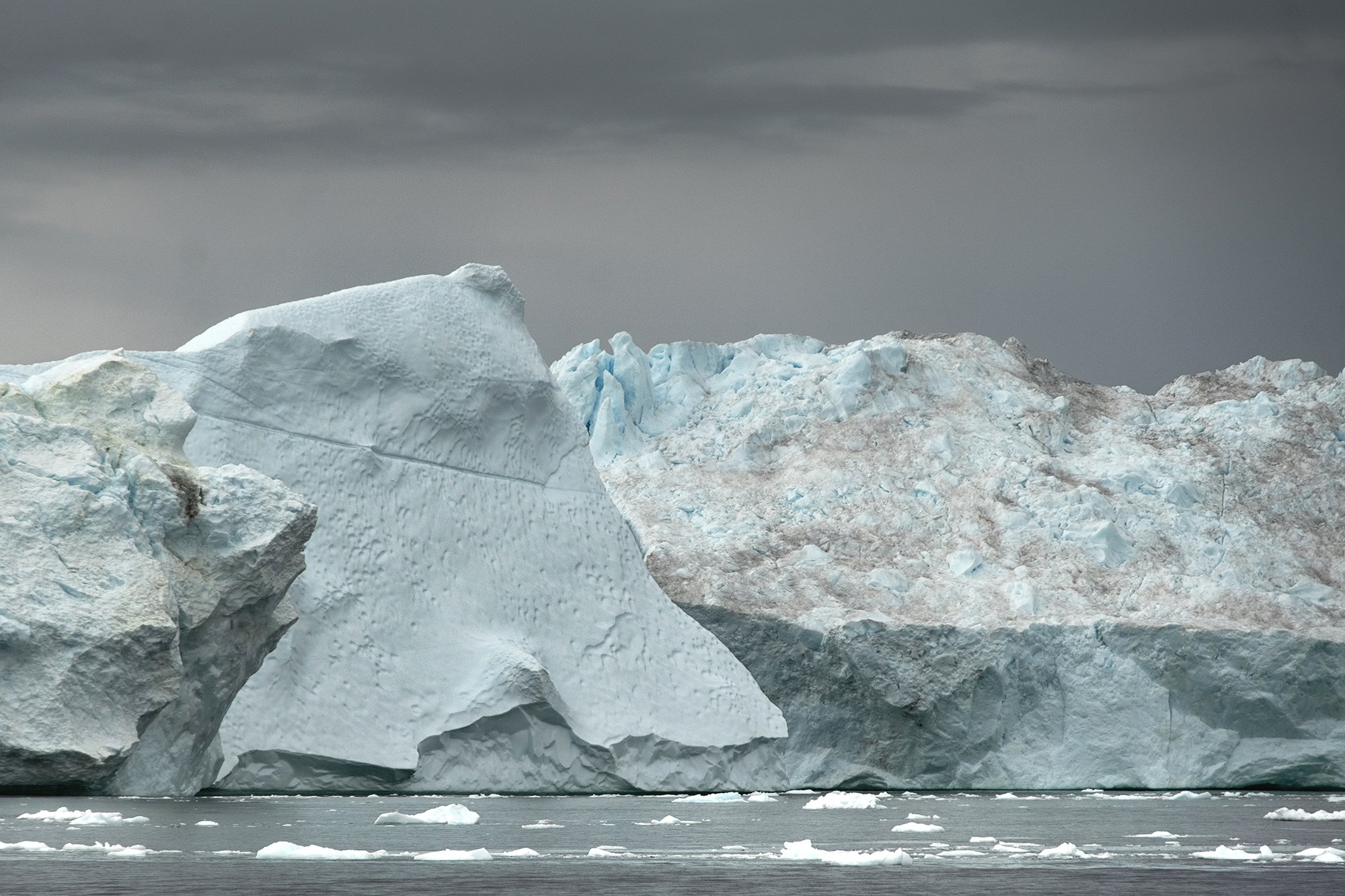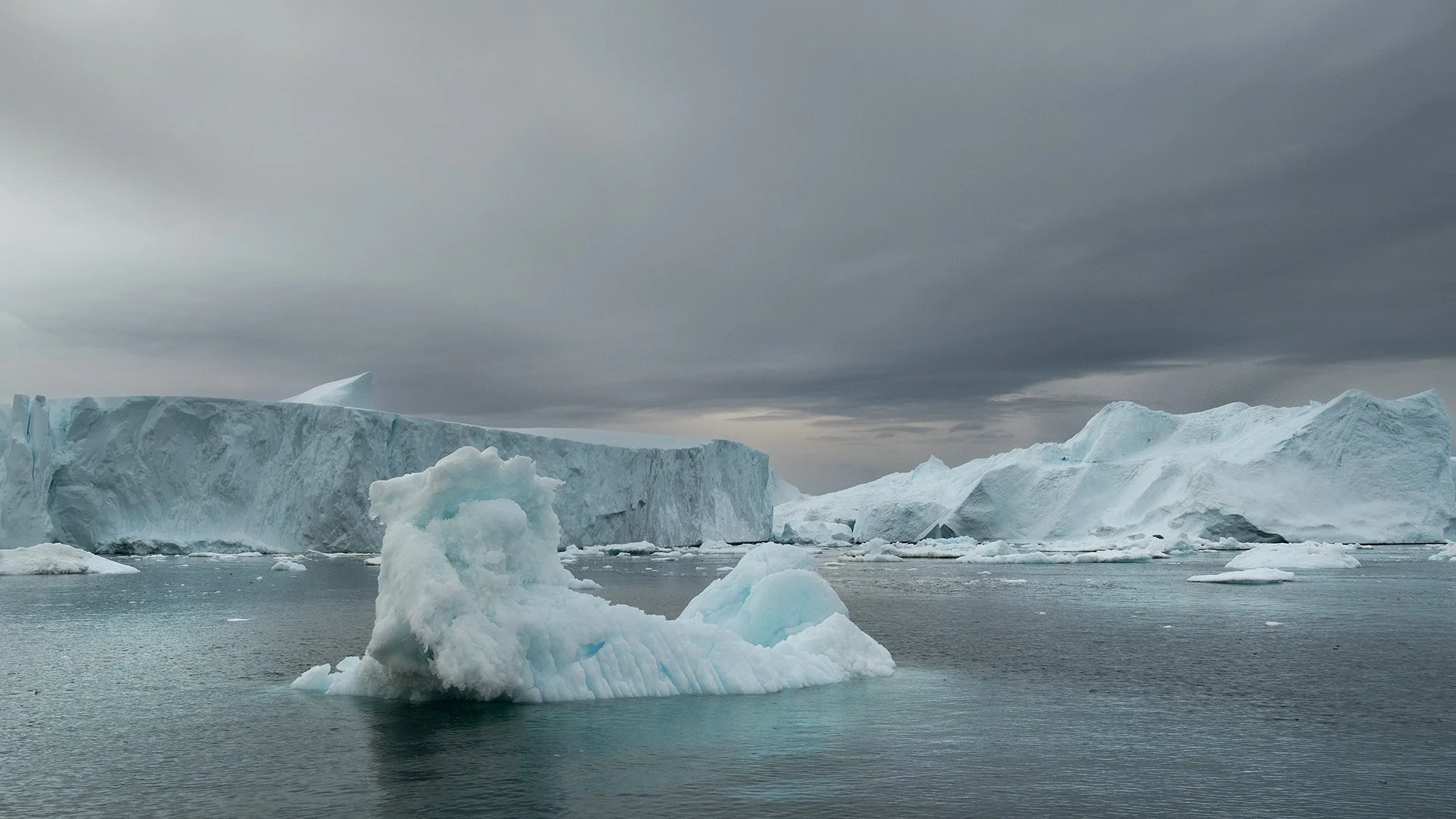The aspect of my voyage around the Greenland coast that excited me the most was the icebergs. A few of them calved off glaciers in the many fjords but many of them originated from the ice fjord at Ilulissat which is 250 miles north of the Arctic Circle.
Sermeq Kujalleq is one of the fastest moving glaciers in the world at a rate of around 40m per day. It is also responsible for about 10% of all the icebergs in Greenland. Ilulissat is also the origin of the iceberg that sank the Titanic and if you visit it is easy to understand why as the scale and number of icebergs was beyond belief. Many are as tall as skyscrapers.
I took a small boat trip around the edge of the ice bergs and it was probably the most awe inspiring trip I have ever done. It was more spectacular than the Grand Canyon as the scale and detail of the icebergs can be really appreciated up close. It is possible to see blue and white ice, ice that is full of moraine material and icebergs that have been worn smooth by the wind and rough ice that has been shaped by the sea.
The enormous icebergs run aground by the mouth of the fjord where the water is shallower than elsewhere in the fjord. The shallowness is a result of a large sandbank being pushed forward by the huge icebergs, causing the ice to run aground.
The icebergs do not move until they have melted enough to break free of the sandbank. Also they will move if a large portion of ice calved from the glacier at the base of the fjord pushes more ice forward. Large waves can also lift the huge icebergs over the sandbank splitting them into relatively smaller pieces. Consequently there is a constant spewing out of ice into the sea where the bergs float south with the currents.
As you can imagine I took a lot of photographs but I hope the ones I have included in my gallery give you a feel for what I experienced. I have also added a few images of the icbergs in some of the settlements that we visited as they added a unique backdrop to the environment.
























